Til hamingju is Icelandic for congratulations.
Now you have learned the A-Ö of Iceland and completed all of the regional classes. Hope you had some fun!
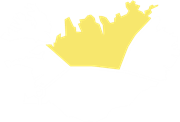


Dubbed the “capital of the North”, Akureyri is the second largest city outside of Reykjavík and is situated at the innermost point of the longest fjord in Iceland. Always bustling with energy, this popular destination draws in both tourists and natives all year round. Restaurants, cafés, boutiques, and galleries line the streets. It's the tourist hub for this region, with the best selection of hotels and tour companies. Striking landmarks include the cathedral poised high on a hill with incredible views, the expansive botanical garden, and Bláa Kannan Café (the Blue Teapot Café), which you can’t miss – it’s in an eye-catching blue building.


Legend states that this horseshoe-shaped canyon was formed when Odin’s eight-legged horse, Sleipnir, touched one of its hoofs down. In reality, Ásbyrgi is a captivating geological wonderland, encompassing cliffs with lush vegetation, divided in the middle by a 250 m wide canyon. It is said to be the epicentre for elves and hidden people in Iceland, and truly the landscape here would make anyone a believer. Stop by the Ásbyrgi Visitor Centre for a listing of the highlights such as hiking trails, camping sites and much more – you don’t want to miss a thing here.


Local brewery Bruggsmiðjan, producer of the popular brand Kaldi, has brought “beer culture” to new heights by introducing innovative beer baths. A first of its kind in Iceland, it’s an intoxicating idea sprung from the beer baths in the Czech Republic. The combination of young beer, live yeast and hops is said to be rejuvenating for the body and spirit. An interesting fact in Icelandic beer culture is that although prohibition ended in 1935, “strong” beer remained illegal until 1989. A handful of local microbreweries are making up for lost time.


This mysterious uninhabited flat top island rises 170 m out of the icy cold waters of the fjord, Skagafjörður. It’s the backdrop to Grettis saga, one of Iceland's most famous sagas, in which the main character Grettir swims from the island to Reykjaströnd, where he then warms himself in a hot spring. That hot spring has since been called Grettislaug (“Grettir’s pool”) after him. People from all over venture to the island during the summer to enjoy bird watching, angling, hiking and the annual Drangey Music Festival.


Ever wondered what life must be like on Mars, look no further than the Námaskarð geothermal area. Bubbling hot sulphuric mud and hissing steam vents are a sensory experience not soon to be forgotten. Located north of Iceland's Lake Mývatn, this vast geothermal landscape has a full spectrum of colours intertwined with unique smells. Yes, smells! You can't escape the pungent eggy stench that escapes deep from within the earth and trails the rising steam – it comes with the territory. The hypnotising beauty of this unearthly experience is well worth it, smells and all.


The “capital of the North”, Akureyri, was awarded the number one destination to visit in Europe in 2015 from the European editors and travel writers of Lonely Planet, a leading travel publisher. It’s no wonder the city took top billing, as Akureyri and the surrounding region are alive with a variety of natural highlights. From snow-kissed mountains to the shores of Eyjafjörður fjord, there is an abundance of activities to fill your day and nights.


Not too long after the Wright Brothers achieved the first sustained airplane flight, Icelanders were also focusing their interest there. The Aviation Museum, located appropriately in an airline hangar at Akureyri Airport, displays a wide variety of aircraft (many of them airworthy), related artefacts, and exhibits of historical photos showcasing this period in Icelandic aviation history. Their annual air show takes place in June, attracting many other visiting vintage aircraft, it's a perfect time to visit. June a perfect time to visit, as this is when their annual air show takes place, attracting many other visiting vintage aircraft.


Bird lovers, you’re in luck – there are three diverse birding trails of the best areas in the North, all mapped out. Each trail has its own distinct character. The northeast trail ventures near the famous Lake Mývatn region, where the most collectively found species conjugate, including species that can be found nowhere else in Europe, such as the Harlequin duck, Barrow’s Goldeneye, and Gyrfalcon. The northwest trail blends birdwatching with glimpses of Icelandic wildlife. Finally, trails around Eyjafjörður and Tröllaskagi peninsula, nestled between high mountains and deep valleys, offer a different view of the tranquil landscape.


Goðafoss is a grand waterfall with a historical connection to the nation’s peaceful conversion from Paganism to Christianity. In the year 1000 AD, Chieftain Þorgeir Þorkelsson faced the enormous task of settling the growing rift between these two religions. Despite being a Heathen priest himself, as the appointed law speaker of Alþingi (“Parliament”) he decided all of Iceland should be Christian. Upon his return from this momentous turn in history, he dispensed with all of his Pagan gods by throwing them into the waterfall as a symbolic act of the conversion, and as a result the fall received its name, Waterfall of the Gods.


The United Kingdom has Stonehenge: and Raufarhöfn, Iceland’s northernmost mainland town, has the Arctic Henge. This gigantic sundial harnesses the sun’s rays and casts shadows among the basalt lava stones. The monumental structure is 50 m in diameter, with towering arches and smaller “dwarfs” circling. The idea and deeper meaning of the henge derive from Norse mythology and the best known Edda poem, Völuspá (“the Prophecy of the Seeress”). It’s said to be a place where guests can empty their mind and renew their energy.


The year: 1999. The venue: an empty airplane hangar in the capital. The event: the launch of Iceland Airwaves. Five bands performed that night at the inaugural event, and with each passing year, Airwaves has established and proven itself as one of the hottest tickets to have in one of the coolest (not to be confused with coldest) places on the international music festival circuit. Airwaves-goers will now be able to see local and international performances both in Reykjavík and the newly added location, Akureyri. It continues to be the hottest ticket in town – both towns!


We don’t have Santa Claus in Iceland. Instead, we have 13 Yule Lads. But before you envy the children, these lads are of trollish descent and bring mischief as well as goodies. In the nights leading up to Christmas Eve, each child leaves a shoe in the windowsill, and depending on their behaviour, a Yule Lad will bring them either a small gift or a rotten potato.
During holiday season, if you’re roaming around the Dimmuborgir rock formations near Lake Mývatn, you might come face to face with Yule Lads such as Stubby, Bowl-Licker, and Door-Slammer and their 10 brothers. But be forewarned – stay clear of their mother, Grýla, as she is not known for her charm and grace.


The stunning environment of Mývatn is the perfect setting for one of the most sought-after experiences in Iceland, a long hot soak in a geothermal lagoon. Bathing in the Mývatn Nature Baths you will start to understand why Icelanders have such affection towards hot springs and pools. With a constant temperature of 36–40°C, it’s soothing and enjoyable in any weather and at any time of day.


The Beatles song “All we need is love” was taken literally by the neighbourly community of Akureyri. In the early days of the 2008 financial crash, this city with a big heart extended their love throughout the town with small gestures of kindness and symbols of love to remind each other that it's true, all we need is love! The tradition continues to this day in big, small, and even unexpected ways. Notice the red heart symbol in the stoplight at intersections – what will they think of next?


Furry, soft and cute are words most often used to describe local farm animals seen at petting zoos, or húsdýragarðar, as they’re known in Icelandic. Life seems to slow down, and simple pleasures take root spending time here. In Iceland, certain farms allow for an “open farm” visit. Visitors who want to learn about life on a farm and see the animals can arrange for the opportunity by calling ahead. While travelling, we suggest that you check in at local visitor centres to find the nearest petting zoos and opportunities to visit open farms.


March is the time of year when the Iceland Winter Games take place around Hliðarfjall mountain range, located just west of Akureyri. Winter sports are undergoing a revival in Iceland thanks to the commencement of the IWG in 2014. In these few years, the games have grown to become one of Europe’s biggest winter festivals. A wide range of events and activities add to the excitement, from ski and snowboard competitions to the Icelandic National Dog-Sledding Championship. Outdoor and winter sports activities will be a blast, whether you take part yourself, or cheer on the competitors while enjoying the breathtaking landscape.


Burial Rites, a novel by Hannah Kent, tells the story of Iceland’s last public execution of a woman. The execution of Agnes Magnússdóttir took place in 1820 at Vatnsdalshólar, a cluster of many hills thought to have formed by a catastrophic landslide. The vast popularity of the book has given rise to movie rights with Jennifer Lawrence portraying Agnes.
Interestingly, in Icelandic literature our beloved writer, poet, and playwright Halldór Laxness was awarded the Nobel Prize for literature in 1957. Translations of his major novels are available in 43 languages, but none have yet made it to the Hollywood big screen.


To come face to face with Mother Nature, go to Dettifoss waterfall. It is believed to be the most powerful waterfall in Europe with a magnitude of 500 m2 of frigid water raging downward each second. The scope of its expansive width is 100 m, and the deafening crash of water drops 45 m. It is hands done one of Iceland’s most spectacular forces of nature, and its power shakes you to your very core.


In 2002 Mt. Herðubreið was chosen as the national mountain of Iceland, and it is often referred to as “the Queen of Icelandic Mountains”, and rightly so. The mountain reigns proudly in a wilderness covered with expansive black desert at her feet.
Near this uncultivated region lies an oasis called Herðubreiðarlindir, a nature reserve thick with flora and fauna. Formation of the mountain began beneath the ice sheet that covered the island during the last glacial period. This area is said to have known outlaws seeking refuge here in later times, the best known being Fjalla-Eyvindur.


There are 85 species of nesting birds and a total of around 330 bird species recorded in the North. The very smallest of all is the Goldcrest. It’s also one of the newest settlers in the country with the first sighting of nesting recorded in 1999.
This region also provides the only breeding spots of the Northern Gannet in Iceland, and sightings of Rock Ptarmigan, Barrow’s Goldeneye, Gyrfalcons and of course encounters with puffins are never greater than in this area. Iceland is every bird watcher’s Shangri-La.


Getting a glimpse of one of earth’s largest mammals is an awe-inspiring moment and an experience to add to your bucket list. There are more than 20 different species of cetacean swimming in the waters off the coast of Skjalfandi bay. Minke whales can be seen on most boat tours, and white-beaked dolphins, killer whales and humpbacks are also known to make an appearance.
The interactive Húsavík Whale Museum also has a collection of skeletons and artefacts and is a fun destination for everyone.


Herring, known as “silver of the sea”, is about the historical monetary value that the herring industry bought to the nation in the mid-20th century. The age of herring prosperity was short-lived, and by late 1960s the herring suddenly stop showing up. Siglufjörður and many other herring towns were left without their main industry and faced financial hardships. The award-winning Herring Era Museum in Siglufjörður, the largest maritime museum in Iceland, pays homage to the glory days of the herring industry in Iceland.


Records suggest that over half of Icelandic dwellings were complete or partially comprised of turf until the early 1900s – a necessity for the harsh weather conditions. These homes provided superior insulation, with the turf laid over a timber structure to form walls and a thick roof.
Of course, that rapidly changed in the 20th century, and nowadays the majority of remaining picturesque turf houses are historical landmarks or museums. The gorgeous houses that make up Glaumbær Museum are an example of that, providing a wonderful insight into how the people of the past used to live.


Travelling here requires preparation. Here are a few suggestions to put on your checklist:
1) Pack good outerwear and warm layers. Year-round, the weather can unpredictable and quick to change.
2) In summer, bring an eye mask. It’s called the land of the midnight sun for a reason, and this will help keep those rays out while you sleep.
3) Explore! What makes Iceland extra special is what lies outside the capital, so explore other regions and make a list of the things you want to see and experience.
4) Book reservations. Places fill up quickly.


Hvítserkur is a 15 m high basalt monolith, or sea stack, seen along the eastern shore of Vatnsnes peninsula. Upon close inspection, some people think the strange shape looks like a dinosaur or dragon drinking water. Legend says that Hvítserkur is a petrified troll, caught by the sunrise while attempting to destroy the Christian monastery at Þingeyrar. In reality, it was once a volcano that the sea eroded over time, leaving behind the plug.


The North is a winter wonderland with adventures waiting to start. Scattered around this district are seven ski resorts; Hliðarfjall near Akureyri is the largest, while Tröllaskagi (“troll peninsula”) is the place to seek out the slopes for heliskiing (helicopter skiing).
There is nothing like experiencing adventurous tours during the mysterious dark days of winter, and you can choose from northern lights, snowmobiles, super jeeps, horse riding, whale watching and more – the hard part is narrowing down your options. December brings out the 13 Yule Lads (the Icelandic version of Santa Claus) in the town of Dimmuborgir. These cheeky fellows bring joy and mischief during the Holidays.


Rifstangi peninsula is the northernmost point of Iceland’s mainland and is recognised as being the closest to the Arctic Circle, with just 3 km separating the two. This far-flung destination holds unexpected treasures in its landscape: an abandoned farm, mass collection of driftwood, and the remains of a shipwreck are just a few of the gems found beneath the watchful gaze of the beautiful Hraunhafnartangi lighthouse. A walk along a 4 km trail leads you to the pivotal point, and upon completion (with photo proof), certificates are given out by the Raufarhöfn Visitor Centre to document this momentous journey.


Come sunshine or snowstorm, Icelanders will go to great lengths to get the perfect scoop of ice cream. Certainly the most famous ice cream shop in Iceland, and “the best”, according to many, is Brynja in Akureyri. It’s quite common to see queues of people waiting to place their order, but that’s okay; the wait provides the perfect opportunity to contemplate what to get. Should you try the bragðarefur, a blended mixture of vanilla ice cream with a choice of added sweetness; or ís með dýfu, a creamy soft ice cream dipped in chocolate? Luckily, there’s no wrong choice when it comes to ice cream.


Vatnajökull National Park takes its name from Vatnajökull glacier, the largest glacier in Europe. It covers more than 13% of Iceland, and at 12,000 km2 it’s also the largest national park in Western Europe. The entrance to the park from this region is at Gljúfrastofa Visitor Centre. Among the many highlights in the park are Ásbyrgi, surrounded by horseshoe-shaped cliffs with the large campsite; Jökulsárgljúfur (“glacier river canyon”), Dettifoss waterfall, and Hljóðaklettar crater plugs. Don’t pick and choose what to see at the National Park; make time to visit them all.


The North provides a full spectrum of adventures for every level of thrill seeker. Whether by land, sea or air, the perfect adrenaline high is within reach. Ride snowmobiles on Kaldbakur, raft down icy Arctic rivers, take an active ride on an Icelandic horse, soar the sky in a helicopter, ski mountain slopes, ride dogsleds, or simply sip hot chocolate while gazing up towards northern lights. It’s all waiting for you!


Iceland is a peaceful nation, but that’s not to say that this country hasn't seen its share of skirmishes between powerful family clans. These were no minor family feuds, they were full-blown battles. The biggest conflict occurred on these shores in 1238 at Örlygsstaðir near Skagafjörður. The historic battle involved the Sturlungar clan clashing against the Ásbirningar and the Haukdælir clans, a civil war that took place during the time known as the Age of the Sturlungs.
Now it is time to learn more about the 7 regions of Iceland.
Take the quiz to test out your skills and be one step closer to know all about the 7 regions of Iceland!


You just aced this class so you are now one step closer to knowing the 7 regions of Iceland inside out.
Share on Facebook


Now you have learned the A-Ö of Iceland and completed all of the regional classes. Hope you had some fun!
Finish all the classes to have the chance to win a trip to Iceland
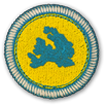

There is something magical about the Westfjords, the region that could arguably be labelled "Iceland's best kept secret". Isolation has preserved the region in a relatively unspoiled wilderness, making it a must-see for any serious explorers.


It's all about beautiful contrasts in the North, a land where long valleys and peninsulas are interspersed with big mountains, lava fields and smooth hills carved out by powerful rivers. Go big or go home!
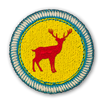

If drifting through picturesque fjords from one warm town to the next is your cup of tea, head to the East. It is home to the country's largest forest, lush farmlands and even the mysterious lake monster in Lagarfljot.
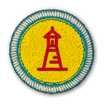

What's so cool about Reykjanes? Not only is it where most visitors set foot in, a geothermal wonder and the home of the spectacular Blue Lagoon, but also a place where lighthouses outnumber villages.
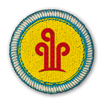

If the regions were pop songs, the South would probably be the chart-topping hit, since it is renowned for its beauty and the home of some o f the country's most visited tourist attractions.





